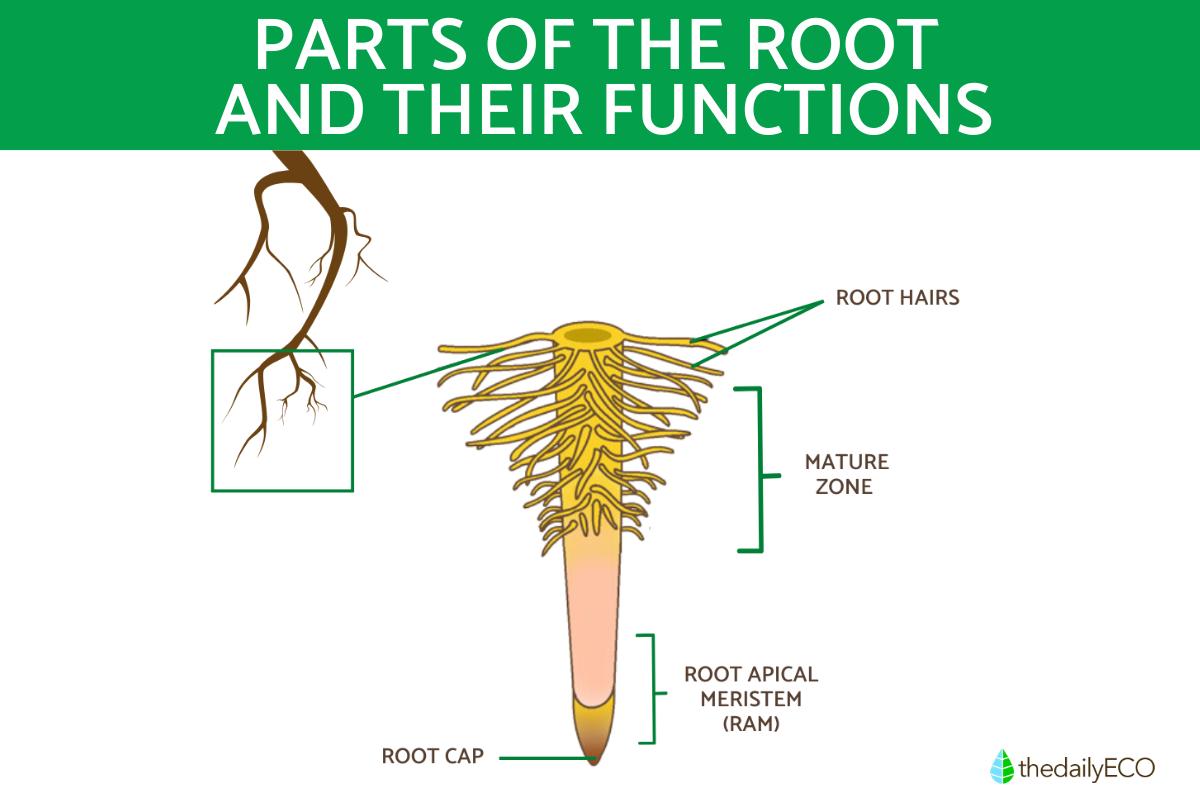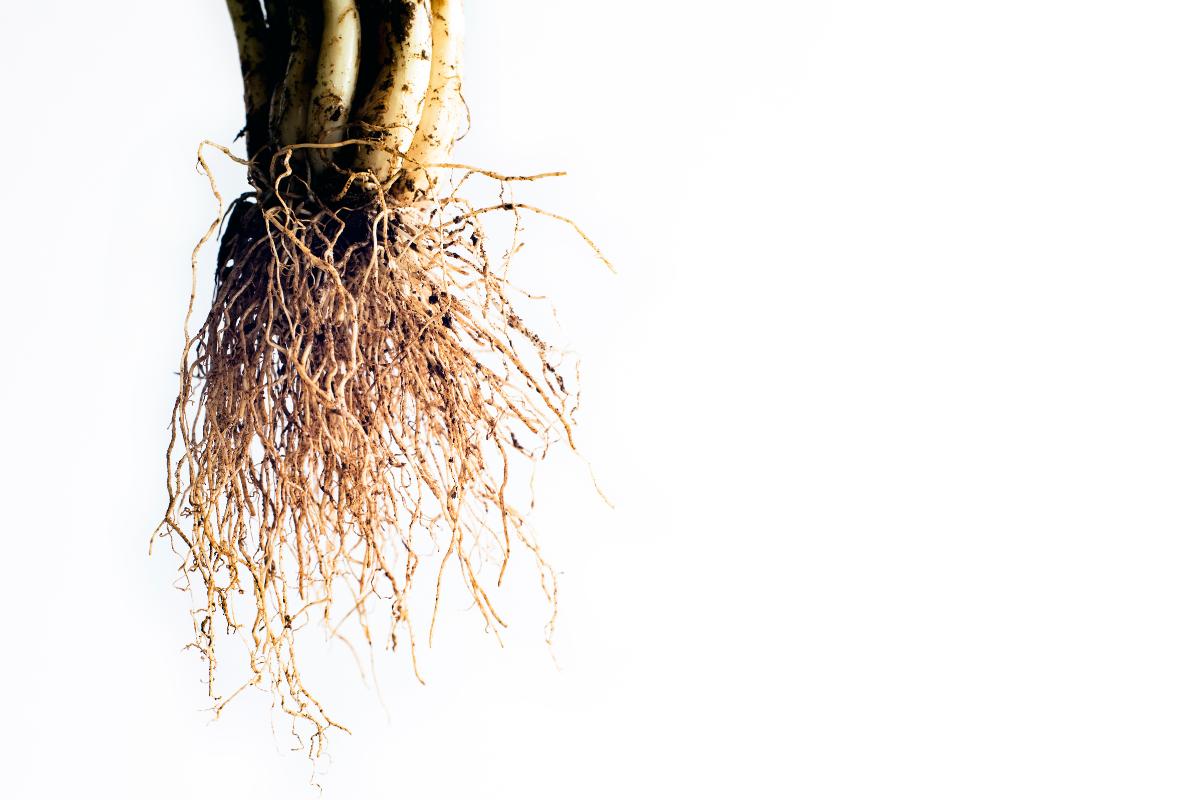What Are the Parts of Roots and Their Functions?


Just like our bodies have different parts working together, plant roots are surprisingly complex structures. We often think of them as just anchors, but they're actually sophisticated systems with specialized tissues and regions, each essential for the plant's survival. Understanding their anatomy helps us see not only how plants survive and thrive, but also why they're so good at adapting to different environments.
n this article from dailyECO, we'll take a look at the different parts of a root and how they function.
What are the functions of roots?
Roots are sophisticated plant organs that perform diverse functions that are essential for plant survival. These include:
- Absorption: may be the most essential function of roots. Roots extract water and nutrients from the soil efficiently through specialized structures known as root hairs. These tiny extensions greatly enlarge the surface area of the root, functioning as thousands of small extractors that gather vital resources from the environment around them.
- Anchorage: Anchorage: offers essential structural support to plants. Plants have developed a variety of root architectures to meet their needs, ranging from extensive tree root networks that spread deep and wide for stability, to the specialized root systems of climbing plants that grip vertical surfaces. This capacity for adaptation enables plants to thrive in various settings.
- Conduction: allows roots to serve as biological pipelines. After absorbing water and minerals, specialized tissues transport these essential resources upward through the root system and into the stem, where they're distributed throughout the plant to support growth and vital functions.
- Storage: represents another critical function of roots. Plants like carrots and sweet potatoes have developed specialized storage roots that accumulate nutrients and energy reserves. These help plants survive dormant periods and fuel new growth when conditions become favorable.
- Production of hormones: entails the production of vital plant hormones known as cytokinins, which control growth and development. Roots also emit chemical signals known as root exudates into the soil, promoting partnerships with soil microorganisms.
- Vegetative propagation: allows certain plants to reproduce using their roots. This enables them to spread out horizontally and create new plants, offering an effective strategy for colonizing suitable habitats.
- Gas exchange: takes place via specialized root structures known as lenticels when the soil is too humid. These adaptations ensure that roots can acquire oxygen while developing in waterlogged soils, aiding plants to endure in difficult environments.
- Symbiotic relationships: embody one of the most fascinating facets of roots. A lot of plants form associations with mycorrhizal fungi to enhance their ability to collect nutrients. Legumes form specialized root nodules that contain bacteria responsible for converting atmospheric nitrogen into usable forms, effectively establishing their own fertilizer factories.
Curious about what happens above ground? Explore how roots connect with stems, leaves, and flowers in our complete plant structure guide.

Parts of the root
Let's break down a root's structure, from where it meets the plant down to its tip. While all these parts work together seamlessly, we can look at five main sections:
- The crown (Root-stem junction): this is where the root connects to the rest of the plant. It's like a central station, where tissues shuttle water and nutrients between the roots and the parts of the plant above ground.
- Mature zone: this is the root's largest and oldest section, kind of like the trunk of a tree. Here, new side roots branch out, exploring more of the soil. Inside, vascular tissues (xylem and phloem) act like tiny pipelines, carrying water and nutrients throughout the plant. This zone also stores extra food and provides support.
- Root hair zone: this area is covered in thousands of tiny root hairs—microscopic, hair-like projections that stick out from the root's surface. These hairs are super important because they're how the plant absorbs most of its water and nutrients from the soil. They're constantly growing and being replaced.
- Root Apical Meristem (RAM): near the root's tip is where new root cells are made. This is where cells multiply, allowing the root to grow longer and explore more soil.
- Root cap: the very tip of the root is protected by the root cap. This acts like a shield, protecting the delicate growing tissue as the root pushes through the soil. It also helps the root sense gravity so it knows which way to grow. The root cap even releases a slippery substance to make it easier for the root to move through the soil.
Did you know that while roots absorb water, leaves lose water through tiny pores? Discover the incredible anatomy of leaves in our comprehensive guide.

Types of roots
Plants have evolved different types of root systems to survive in various environments.
The two main types you'll commonly encounter are tap roots and fibrous roots, though some plants develop special modifications for specific needs.
Tap root systems:
These roots have one main root (called the tap root) that grows straight down into the soil, with smaller roots branching off from it. This design helps plants reach deep water sources, anchor firmly in the soil, and often store nutrients. It's why carrots and radishes are so nutritious, and why dandelions are notoriously difficult to pull out of your garden.
Other common plants with tap roots include parsnips, beets, turnips, and many trees, especially in their early stages of growth.
Fibrous root systems:
Instead of one main root, these plants have many similar-sized roots that spread out near the soil surface. This system is excellent for absorbing surface water efficiently and preventing soil erosion.
You'll find fibrous roots in all types of grasses, corn, wheat, and many garden flowers. Rice and onions also use this type of root system to thrive in their growing conditions. The spread-out nature of fibrous roots makes them particularly good at quickly absorbing nutrients and water from the topsoil.
Special root modifications:
Some plants have developed unique root adaptations to meet specific environmental challenges.
- Aerial roots: grow above ground and help plants like ivy climb walls or orchids absorb moisture from the air. Some plants even use aerial roots for support, like corn with its prop roots.
- Storage roots: they have evolved to store food for the plant. Sweet potatoes and cassava are excellent examples of this adaptation, storing nutrients that help the plant survive during difficult growing conditions and providing valuable food sources for humans and animals.
Understanding these root types helps gardeners and plant enthusiasts make better decisions about plant care. It explains why some plants need deep watering while others thrive with surface irrigation, and why certain plants can be easily transplanted while others resist removal. Want healthier plants? Learn how strategic root trimming can promote stronger growth in our guide to root pruning techniques.

If you want to read similar articles to What Are the Parts of Roots and Their Functions?, we recommend you visit our Biology category.
Lynch, J. P. (2012). Root phenes for enhanced soil exploration and phosphorus acquisition: Tools for future crops. Plant Physiology, 156(3), 1041-1049. https://pmc.ncbi.nlm.nih.gov/articles/PMC3394661/
Lynch, J. P. (2018). Harnessing root architecture to address global challenges. Plant Physiology, 178(2), 7-15. https://www.ncbi.nlm.nih.gov/pmc/articles/PMC9299910/








